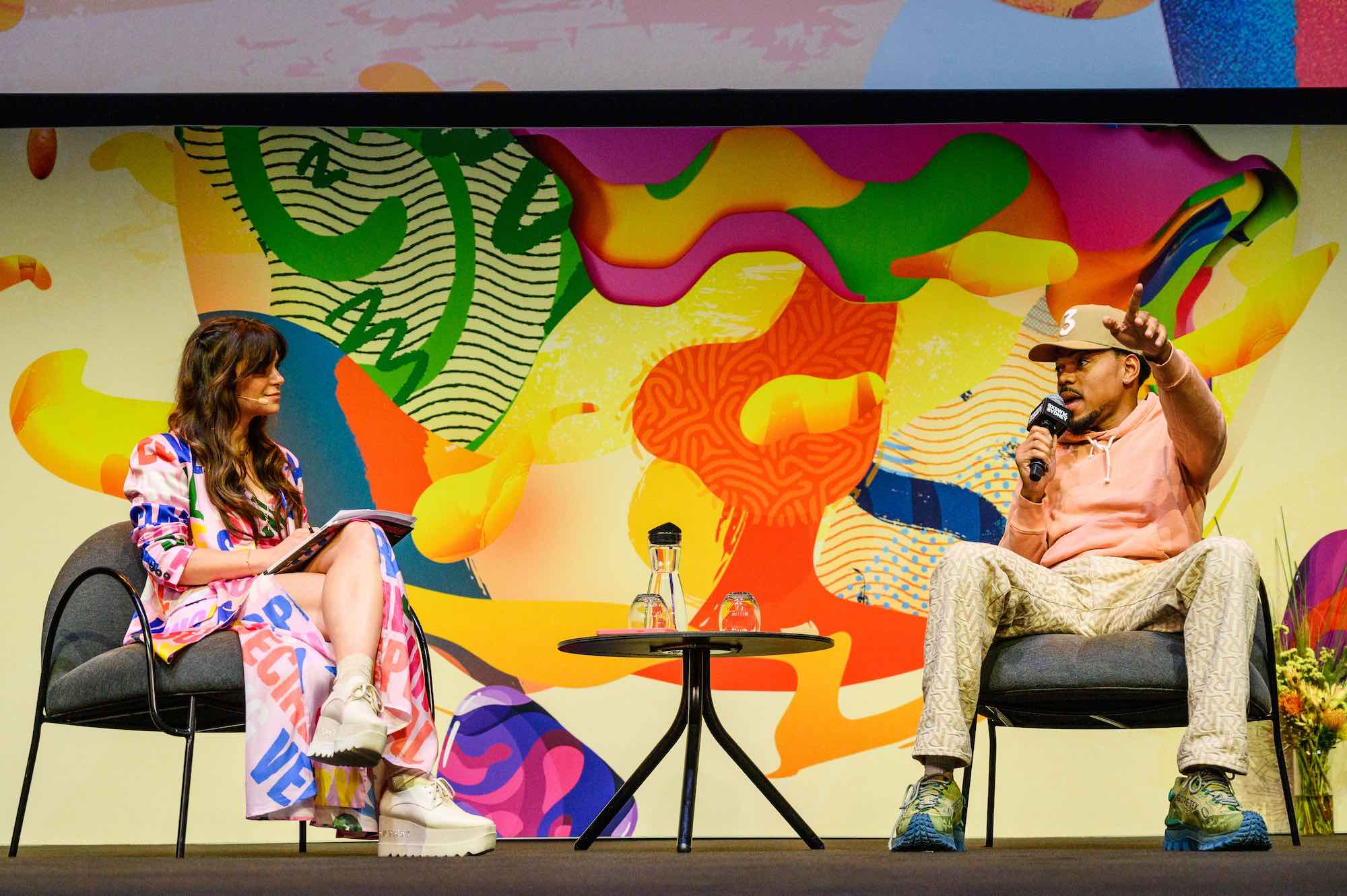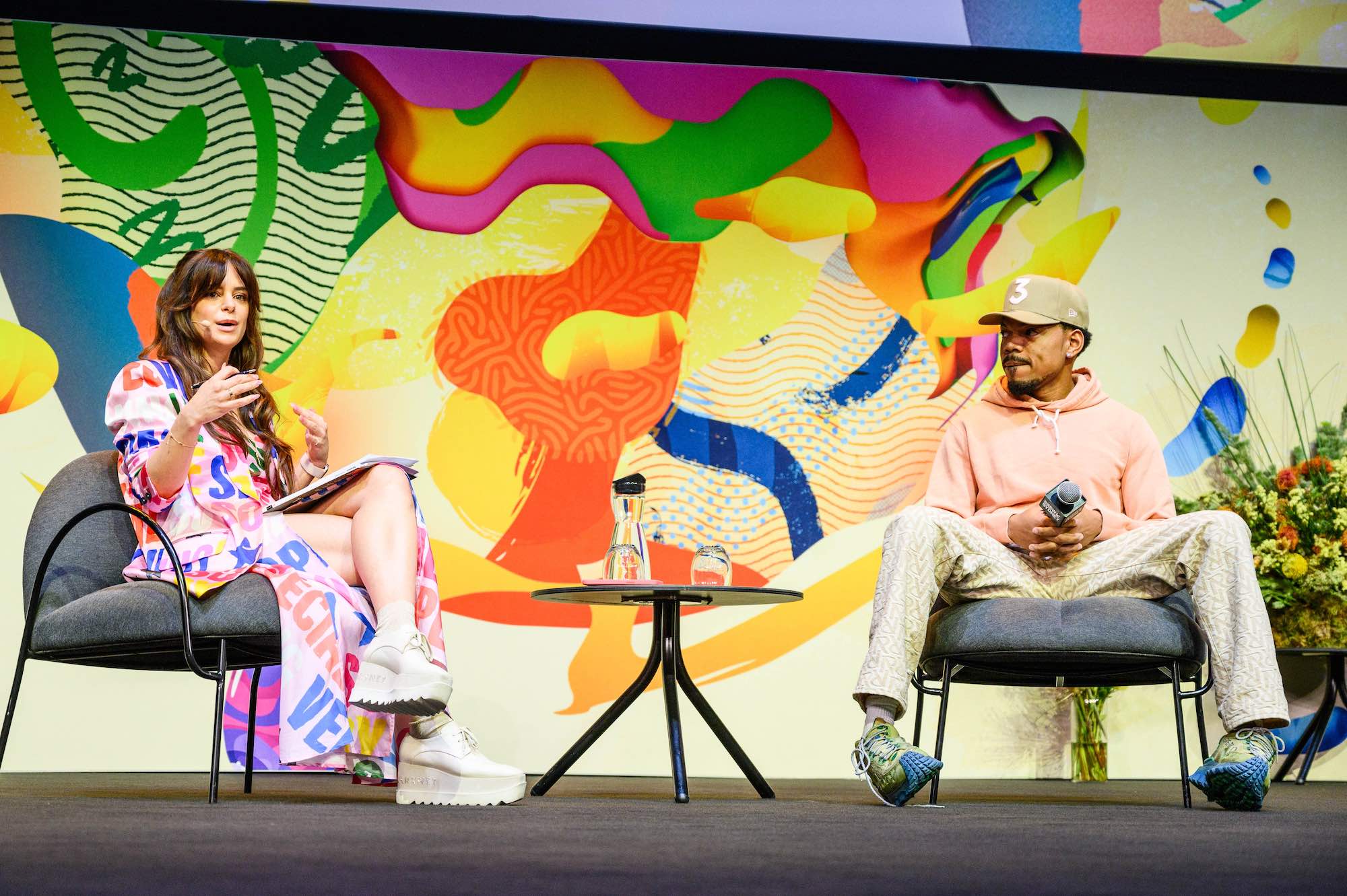When Chance the Rapper took the stage at SXSW Sydney last week, the at-capacity Darling Harbour Theatre knew they were in for a scintillating keynote interview from the world’s first truly independent artist.
Interviewed by this journalist, the conversation covered the significance of his high school suspension when he recorded his debut mixtape 10 Days, to the fleeting nature of relationships, the bleak realism paired with gospel joy to come out of Chicago’s vibrant hip hop scene, his considered thoughts on so-called Australia’s recent dismissal of our First Nations peoples, to what he believes is the meaning of life.
Chancelor Johnathan Bennett covered a lot of ground in the hour-long talk, but one thing was clear: he arrived in this country to deliver a message of hope and to pay tribute to hip hop on the genre’s 50th anniversary.
Below are five takeaways from Chance the Rapper’s SXSW Sydney keynote interview.
SXSW was the reason he blew up
“The reason why I ended up on tour with Donald Glover was because of SXSW. And I don’t know how many of you guys know that history is this festival, but it started on the states in SoCo in Austin, Texas when I was 18, going on 19. Or maybe I just turned 19.
“I travelled by myself for the first time via train, I took a 26 hour train ride to Texas to go perform a few shows I was booked for.
“[…] I was a roadie and backline technician for this band called Kids These Days and I was given an opportunity to rap at one of their shows at South By. And a guy named Dan Weiner, his last name is hilarious, he saw me at this show, and asked me if I had any new music and I had a copy of that 10 Day project you were talking about, like a burnt CD, and I gave it to him. And it turned out it was a it was the publicist for Donald Glover. So he passed the tape on to him.
Love Music?
Get your daily dose of everything happening in Australian/New Zealand music and globally.
“So South By in a lot of ways, really changed the entire trajectory of my life and my career. And if I hadn’t made the decision to go out there, and be a confident young performer, and be open to engaging in that work. I wouldn’t be on this stage here at SXSW.”
Chance the Rapper is influenced by American theologian James H. Cone
“I have gone through a lot of different theological understandings of the world. I guess my most recent is James H. Cone, who wrote some incredible books that you should definitely read if you get a chance.
“He wrote God of the Oppressed, he wrote A Black Theology of Liberation. And the understanding that I have now is that God is a God of the oppressed and his will is that we be free, and be allowed to be ourselves and come into the Kingdom that has been presented to us.
“There are many different places around the world, where you see oppressed people who are voiceless, and just the willingness to still pray to God, and still love God, and still ask God for assistance. And to be in his will, is a testament to the strength of the oppressed.”

Poppy Reid (Rolling Stone AU/NZ) and Chance the Rapper. Credit: Ashley Mar
Chance the Rapper doesn’t love having to navigate capitalism as an artist
“We all live in a capitalist society and no matter how close you are to your moral centre, you’re still working and operating within a system that lives on the backs of the least empowered people. I do a lot of philanthropy work, I do a lot of advocacy, I do a lot of just trying to help people.
“But also just the way that the world is set up right now, I gotta sell merchandise, and even producing T shirts — it’s really hard not to be a capitalist.
“[…] To be able to operate outside of that and to create more cooperative economic systems is something that I’m working towards but I haven’t fully figured out yet.”
Lil Wayne is on his new album, Star Line Gallery
“You want an exclusive? Lil Wayne’s on the album. And there ya go! [laughs].”

Poppy Reid (Rolling Stone AU/NZ) and Chance the Rapper. Credit: Ashley Mar
Ghanaian visual artist Naïla Opiangah changed the way Chance the Rapper releases music
“[Naïla Opiangah is] one of the greatest painters and architects if this day and time. […] She was kind of marginalised in the space because she’s a black woman with a loud voice and a lot of opinion. She left the space, she didn’t want to design or create architecture anymore, and she ended up painting. She’s just as good at painting and she was at architecture.
“[…] Art, just like hip hop, is a liberation tool. It’s meant to speak to people. […] Artists are the people that communicate at the highest level, not only can they express an emotion, but they create an emotion for you.
“[…] At a certain point [on my trip to Ghana] we came to an understanding that we need each other. the recording artist needs the visual artist and the visual artist needs the recording artist; because some people are visual learners and some people need to hear you say it.
“And what we did was we collaborated on a on a multidisciplinary piece. It’s called Child of God, it opened at the MCA but it’s part painting, part song, part film.
[…] It really showed me the power of having a multimedia explanation of a concept. […] I made up my mind then after we created a Child of God together that I have to create with a visual artists every time I make a new piece so that I can get that point across.”



































